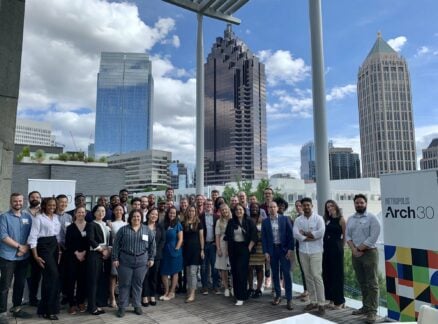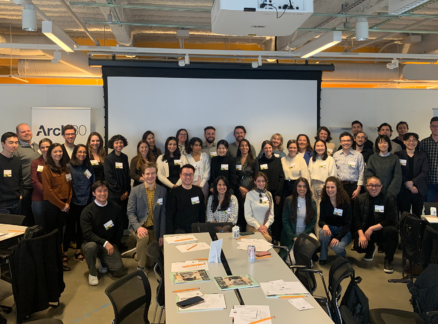November 1, 2009
Tribal Plan
Holst Architecture shapes new offices to reflect Ziba’s unique culture of design.
As any designer worth his salt knows, the spaces we inhabit can either aid or impede what we do in them. Accordingly, Portland, Oregon–based Ziba, which has expanded over the past decade from an award-winning product-design firm (it created the first mass-market ergonomic keyboard) to a collaborative, research-intensive consultancy offering a broad range of services, came to need a new kind of work space. “You don’t innovate in a vacuum anymore,” says Sohrab Vossoughi, Ziba’s founder and president. “It’s not Thomas Edison in his garage. You need to bring people together and mix it up.”
When the company sought an architectural partner to tailor its new headquarters in Portland’s Pearl District, it turned to the local firm Holst. Ziba’s offices, which occupy the top two floors of a three-story, 76,000-square-foot building completed this August, embody what Vossoughi calls the company’s “tribal” design method. Ziba’s Spartan allotment of individual workstations—including the president and creative director’s desks—is arranged into long, communal tables. The workstations are situated amid an interlocking sequence of podlike meeting rooms connected by sliding doors. It’s in these rooms that teams spend most of the workday, pinning their inspirations and ideas to the walls. “At first they were looking at one big room for everything,” says Jeff Stuhr, one of Holst’s two founders. “But we suggested a sequence of intimate spaces that you could journey through.”
Playing counterpoint to and helping organize these labyrinthine work areas is the “street,” an open corridor stretching the length of the two-story glass curtain wall on the north facade. Left free of furniture, it bathes the entire space in natural light. (It’s also a nod to the pedestrian-friendly city’s emphasis on the public realm, as are the retail spaces on the ground floor.) “Ziba’s old office was full of chaos,” says Stuhr’s partner, John Holmes. “By having these larger scaled elements, it creates a strong spatial rhythm—it orders everything. You can still have all that chaos, but it’s grounded.”
When employees aren’t powwowing in work pods, they can gather in incidental spaces such as the in-house library or the pocket gallery, where Ziba will soon have an exhibition featuring its work in China. The unique needs of Ziba’s clients were also considered. Eighty percent of them are from out of town—many are based in Asia—and they often come in on morning flights hours before they can check in to their hotels. The new offices, therefore, include a lounge with sofas, a tele-vision, a minibar, and a shower where early arrivers can unwind.
Because the client is itself a design firm, Holst and Ziba worked as partners on the headquarters. “They would delib-erate the smallest detail exhaustively, like the hinge on a cab-inet,” Holmes says. “But we liked that. It pushed us a little bit.” Vossoughi acknowledges the unique challenges—and results. “Designing for designers is really hard,” he says. “But context removed those barriers. It wasn’t ‘my idea’ or ‘your idea.’ The true collaboration happens when you stimulate each other and put thoughts in each other’s minds.”





